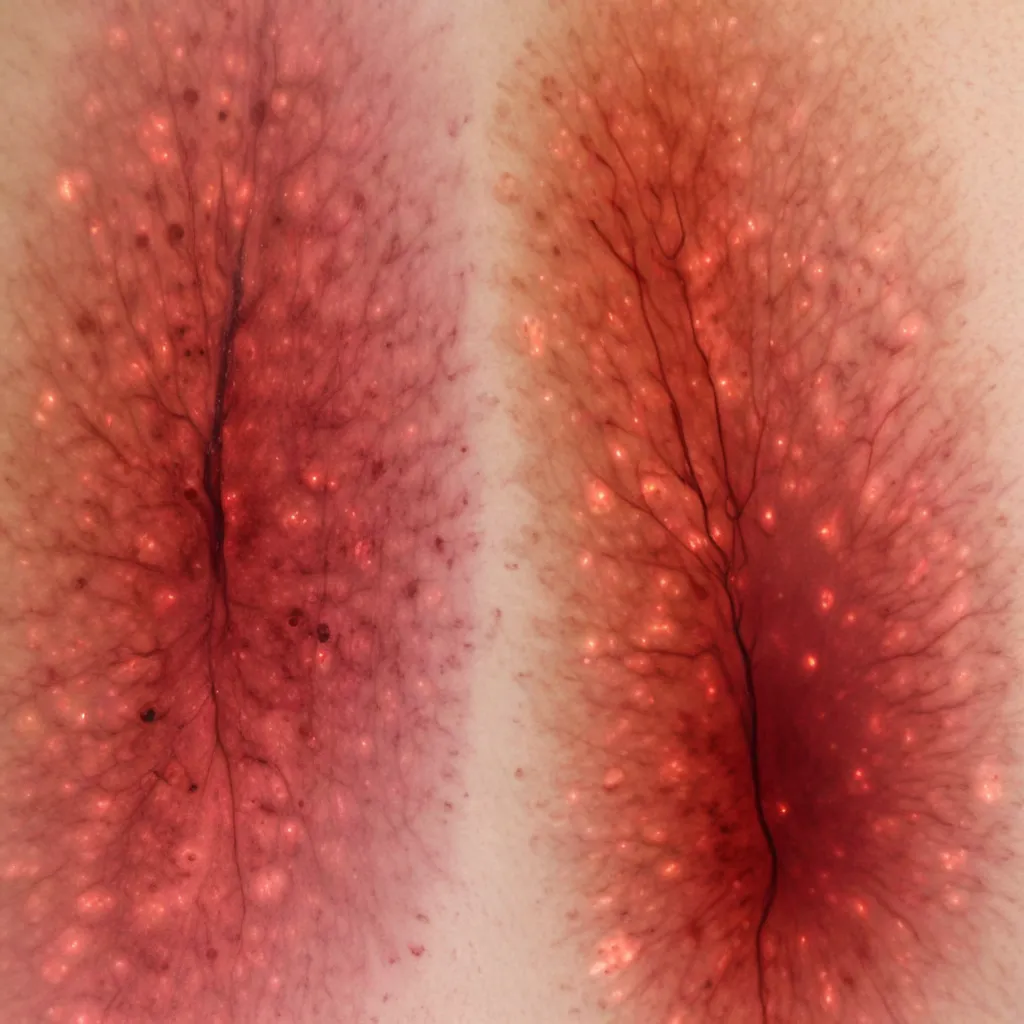
Port wine stains (PWS) are a type of congenital vascular malformation involving the dilation of skin’s capillaries and small venules, commonly located on the face and neck. These birthmarks typically appear at birth and do not regress spontaneously. Without treatment, PWS can progress over time, leading to darkening of color, skin thickening, nodularity, and susceptibility to bleeding after trauma. This condition can significantly impact a patient’s appearance, psychological health, and normal social life.
Pulsed Dye Laser Treatment
Mechanism of Action
To address PWS, the pulsed dye laser (PDL) with a wavelength of 595 nm has emerged as the standard treatment in clinical practice, based on the principle of selective photothermolysis. This laser targets the dilated blood vessels within the PWS, selectively heating and destroying them while minimizing damage to the surrounding healthy tissue.
Efficacy
A retrospective study conducted at Beijing Children’s Hospital examined the efficacy of 595 nm PDL in treating 974 pediatric patients with PWS over a 20-year period. The overall efficacy rate was 65.3%, with higher rates among female patients (69.7%) compared to males (59.7%). Adolescents had the highest efficacy at 100%, likely due to better compliance during treatment.
Interestingly, the location of the PWS lesion also played a role in treatment outcomes. Limb lesions responded best (87.5%), followed by the neck (75.0%), trunk (66.7%), and the head/face (63.0%). Smaller lesions (≤3 cm²) achieved a 76.8% efficacy rate, while larger lesions demonstrated lower success. Efficacy also increased with the number of treatment sessions, reaching 84.0% after three sessions.
Safety
The study reported a relatively low incidence of adverse reactions at 4.31%, including temporary pigmentation changes (2.87%), hypopigmentation (1.03%), and minimal scarring (0.41%). These adverse effects gradually diminished over the course of 1 to 5 years of follow-up.
Pediatric Population
Prevalence
PWS is a common congenital condition, affecting approximately 0.3% to 0.5% of newborns. These vascular lesions can occur in both children and adults, but the pediatric population represents a crucial focus for treatment, as early intervention can significantly improve outcomes.
Clinical Presentation
Typical PWS lesions present at birth as flat, pink to purple-red discolorations on the skin. Without treatment, these birthmarks may darken and thicken over time, potentially leading to physical and emotional distress for the patient.
Psychological Impact
The visible nature of PWS can profoundly impact a child’s psychological well-being, leading to issues such as low self-esteem, social anxiety, and difficulties in interpersonal relationships. Prompt and effective treatment is essential to mitigate these adverse effects and improve the quality of life for pediatric patients.
Long-Term Outcomes
Recurrence Rates
While PDL treatment can effectively clear PWS lesions, the risk of recurrence remains a concern, particularly in cases with extensive or refractory lesions. Ongoing monitoring and occasional maintenance treatments may be necessary to maintain long-term results.
Quality of Life
Successful PDL treatment has been shown to significantly improve the quality of life for pediatric PWS patients, both in terms of physical appearance and emotional well-being. Patients and their families often report increased self-confidence, reduced social stigma, and a greater sense of normalcy.
Patient Satisfaction
Numerous studies have highlighted the high levels of patient satisfaction associated with PDL treatment for PWS. Patients and their families appreciate the significant improvement in the appearance of the lesions, as well as the relatively low incidence of adverse effects.
Laser Parameters
Wavelength
The 595 nm wavelength of the PDL system used in the Beijing Children’s Hospital study is well-suited for targeting the hemoglobin-rich blood vessels within PWS lesions, as this wavelength is selectively absorbed by the targeted chromophore.
Pulse Duration
The study found no statistically significant difference in efficacy between laser pulse durations of 1.5 ms and 3 ms, suggesting that a range of pulse widths can be effectively utilized in PDL treatment of pediatric PWS.
Fluence
The energy density (fluence) used in the study ranged from 9-12.5 J/cm², with the most common settings being 11 J/cm² and pulse widths of 1.5-3 ms. This fluence range allowed for targeted heating and destruction of the abnormal blood vessels while minimizing collateral damage to surrounding tissues.
Treatment Considerations
Timing of Intervention
Early intervention with PDL treatment is crucial for pediatric PWS patients, as it can help prevent the progression of the lesions and the associated physical and psychological consequences. Experts recommend initiating treatment as early as possible, often within the first year of life.
Combination Therapies
While PDL remains the standard of care for PWS treatment, the study authors suggest that combining PDL with lasers of greater penetration depth may help improve the limited cure rate observed in clinical practice. Ongoing research is exploring the potential synergistic effects of combination therapies.
Patient Selection
Careful patient selection is essential for optimizing PDL treatment outcomes. Factors such as lesion location, size, and skin type should be considered when determining the appropriate treatment plan. Regular follow-up and monitoring are crucial to ensure the best possible long-term results for pediatric PWS patients.
The comprehensive study conducted at Beijing Children’s Hospital provides valuable insights into the efficacy and safety of PDL treatment for port wine stains in the pediatric population. By understanding the factors influencing treatment outcomes and the long-term benefits, healthcare providers can offer tailored, evidence-based care to improve the quality of life for children living with this congenital condition. As the Wine Garden Inn team, we are committed to staying informed on the latest advancements in the field of dermatology and how they can positively impact the lives of our guests.
